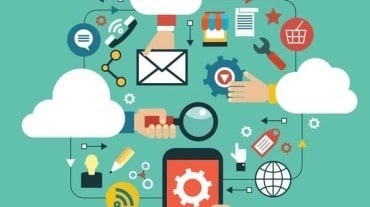IBM Distinguished Engineer Pam Nesbitt discusses the advances in diabetic care using AI and predictive analytics. Ms. Nesbitt is Chief Architect for the Watson Health partnership with Medtronic, a global leader in implantable medical devices.
Learn how a monitoring device that communicates with IBM Watson functionality in the cloud is being used to identify glycemic and behavioral insights and predict dangerous hypoglycemic events in time to take preventive action.
Watch Part 2 in the series here.
Transcript
Adrian Bowles: We’re here today with Pam Nesbitt, from Watson Health. We’re going to talk about some of your applications. But first, maybe tell us a little bit about your role with Watson Health.
Pam Nesbitt: Yes. My role is Chief Architect for a partnership that we have with Medtronic. They were one of our key founding partners for Watson Health. They are a very large manufacturer of devices to monitor health. They have a very large cardiac division. We’re working with their diabetes division.
They make a number of different devices for diabetes management. Some of them are insulin pumps, and some are continuous glucose monitors, which means that it’s measuring your blood sugar, but it’s not injecting insulin automatically. You make a decision yourself, whether to inject it.
AB: So you still have the human in the loop.
PN: Yes.
AB: You’re providing them with the information to make a better decision about it. Okay.
PN: Watson Health is focused on trying to help fix some of the world’s most pressing health problems. Diabetes, in my humble opinion, is one of those really urgent issues. There are over 30 million people in America only that have diabetes, and over 90 million that have pre-diabetes. Many of them don’t even know.
In other countries, it’s going to double or triple in the next 25 years.
AB: Okay, so we’ve got a hardware device. What’s the Watson value add, or the AI part of it?
PN: The AI part of it, there are several. Basically we take this data that’s coming in, and we analyze it. We do the pattern mining and correlations and predictions, and generate insights and predictions that help them to manage their condition. We push those out to a mobile application that they have on their phone.
AB: Okay. Health, is this continuous?
PN: It is continuous.
AB: Tell me how the person actually uses it.
PN: They have the continuous glucose monitors attached to some part of them, usually their stomach. It’s measuring interstitial blood sugar, which is converted to blood sugar, or an approximation thereof. That’s sent to CareLink at Medtronic. Then it’s sent to the Watson Health Cloud, where it’s ingested by our back-end analytics system, which is comprised of some software, including IBM Streams, which is a real-time streaming analytics platform.
All of that data is held in memory. As data comes in, it looks at all of the corpus of data that’s been accumulated for this patient, and generates for each and every patient, individualized insights and predictions and data about how they’re managing their condition so that they can improve it.
AB: Okay.
PN: It pushes those out to the mobile phone.
AB: Is the push event driven? Or is that time driven? How is it?
PN: Actually that’s a very good question. There are a couple of different things. One is, we’ve got the data coming in every five minutes. As we do, the secondary display is showing that data, so they can kind of just see the timeline. Then we’re doing roll-up, so they can see over a period of time—over an hour, over a day, over a week—how have they been performing blood sugar-wise? Have they stayed in range? How many times have they had excursions outside of range?
As a result of that, they can see patterns of when they’re doing well and when they’re not. But it goes further. Meanwhile, in the background, there are triggers that come in, which are things that they’re doing. They eat something. They do some exercise. They do a variety of other things.
Each time those triggers come in, even time of day, we go and we look at all of the data we have for them, about what they were doing at that same time, or when they were doing that thing before, how their blood sugar was performing. As a result of that, we can see patterns over time. So we push out insights about those saying, “This time last week, you were doing worse than you are now.” Or, “Every day at this time, the following has happened.” Or, “Last time you did this, this happened.” Or, “The last seven times you did this, this happened. Maybe you should think about doing something else.”
We give both glycemic insights, which are typically related to blood sugar and bolus events. Then we also give motivational insights, which are, when we see patterns of behavior that are really good, we say, “You did something really good, and here’s what.”
AB: Okay.
PN: Then the last thing is predictions. Sorry, I kind of went off –
AB: No. Tell me about the predictions.
PN: This is a new thing in 3.0, which we just released in December. This is new in the marketplace. Which is, we can predict up to four hours ahead that they’re going to have a hypoglycemic event, which means going low, which is a very bad thing for a person with diabetes. We can tell them with fair accuracy, in fact very good accuracy, that the likelihood that they’re going to go low is high, medium, or low. Then they can choose to take action.
A person with diabetes typically cares for themselves mostly. Their visits to the doctor are very infrequent. As a result of that, they’ve had historically to log everything in a diary. They not only had to log it, they had to remember when they did it, how much they did it, etc. The use of a mobile application, which in many cases can pick up this information from a variety of wearables, or they can log it themselves, is amazing, because of the reduction in time and effort that it takes for them.
AB: I like that. The whole scenario. It’s giving you a platform instead of your notebook. But it’s one that can at some point, I don’t know if you think of it as interactive, but by providing that feedback, your notebook could never do that, right?
PN: Yes, exactly.
AB: So it creates a new set of behaviors that should be a virtuous cycle for someone with diabetes.
PN: Right, and you can go back in time. You can see how you did three months ago.
AB: Yes.
PN: You can see improvement over time. That’s a really amazing thing. Because, I don’t know, I’m a Type A. I want to know when I do well. I want to know when I did better. I want to improve constantly, and that’s the kind of feedback that you can get. Not only that, it’s improving your health.
AB: Better than gamification.
PN: Yes.






Pingback: Video: Application Development with IBM Streams - RTInsights